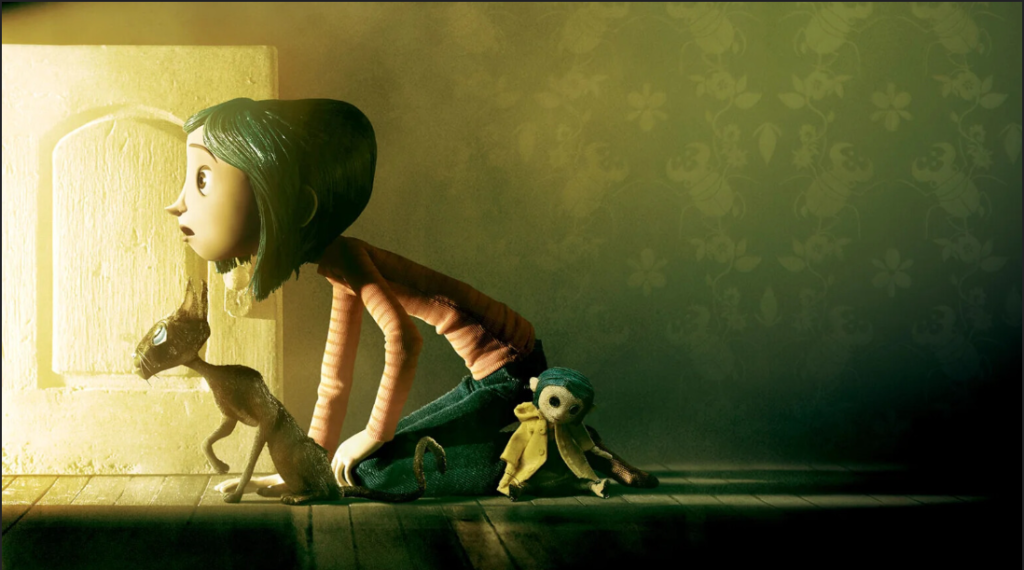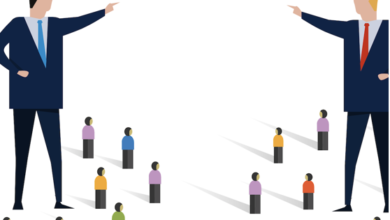
Source: Brickset on Flickr, license: https://creativecommons.org/licenses/by/2.0/
“Being brave doesn’t mean you aren’t scared. Being brave means you are scared, really scared, badly scarred, and you do the right thing anyway.” – Coraline
“The Diary of Anne Frank”. “A Wrinkle in Time”. “Harry Potter”. These are all books that have found themselves on challenged and banned book lists at one point or another. They are not the first of their kind. They add to a growing fervor toward banning books in the U.S., particularly in school libraries. Now, if you’re a reader, you probably have a few books from your childhood that feel formative. The ones that you look back to as an adult and feel as strongly connected to as you did all those years ago. For me, there are too many to count. From picture books, to my first forays into middle-grade novels, I still go back to them now. And the older I’ve become, though I am still fairly young, the more I see the value in all of those “childish” stories. The books I read then discussed things like grief and loneliness, friendship and love. Many of them helped me to better understand others as much as myself, and the lessons I learned are still as relevant today as they were then. Children’s stories have offered me poignant lessons on how to be a child and, in the same vein, on how to be an adult. Growing threats to those stories remind me of the power of children’s books and my hopes for a generation that may grow up with scarlet letters stamped on all of their childhood favorites.
More than 1,400 books were banned in just the first six months of the 2022-2023 school year, according to Pen America. Florida, alone, has been on the road to banning 313 books in school libraries after the passage of House Bill 1069 in July 2023. This bill has led schools to limit any books related to sexuality, gender, and reproductive health. You may ask yourself why we should care so much about children’s books. After all, most people grow up and forget about them anyways, right? But I would argue that their importance is too often overlooked. Some of the characters I read about as a kid looked like me, but many did not. They didn’t talk like me or act like me; they certainly didn’t have all the same experiences that I did. Yet, I was still able to connect with them on a deeper level. Which is why it’s saddening to see that these types of stories are some of the most challenged. Namely, books that deal with real-world issues like racism and homophobia. Challengers have called these topics “inappropriate” for children and teens.
At the intersection of both issues is the widely challenged and banned novel “All Boys Aren’t Blue” by George M. Johnson. The young-adult memoir details Johnson’s experiences navigating childhood as a queer Black man. He touches on themes of masculinity, identity, and joy through adversity. Johnson’s experiences are not one-in-a-million. LGBTQ+ and minority youth around the country face heightened rates of bullying, mental health challenges, and suicidal thoughts. Black LGBTQ+ youth are much less likely to receive the professional help they need to combat these issues. While a book is certainly no substitute for real-world support, what books can provide is a safe space for kids to feel seen. They act as mirrors to let kids know that there are others out there like them. But, they don’t only help children who can relate to them directly. Children who have no shared experience with the characters of these novels can still find common ground through the story. Diverse books introduce kids to the inner lives of their peers, molding them into open-minded young people who become open-minded adults. In banning these books, not only do we deprive children of representation, but as We Need Diverse Books puts it, we deprive them of “the opportunity to build empathy toward others who might not look like them.”
If we know that children and teens have a diverse range of experiences then we know that they must find ways to cope with those experiences, just as we adults do. Feelings like grief and loneliness can be overwhelming, especially for youth moving through formative periods of their lives, all with the added stressors of navigating school, friendships, and home life. Reading stories that tackle these big feelings is a valuable way to learn how to work through their own problems. For kids who don’t have access to support in their real lives, these books can provide alternative resources. “Bridge to Terabithia” was one of my favorite books growing up and, as it turns out, also a popular one on banned book lists. Its position on these lists has been attributed to its discussion of death and the fantasy world that the main characters create, along with other concerns such as its use of swear words. Some expressed concern that children would “use fantasy to cope with real-world issues.”
My question would be: is that such a bad thing? Fantasy can be a fantastic escape when done right. Of course, the line between fantasy and reality needs to be drawn, especially for younger children, but “Bridge to Terabithia” is a great example of how to do it right. The story follows two fifth graders who create a fantasy world to escape from their home lives together. The book makes it clear that their fantasy world is not real, but that it is still just as important to the main characters. Many children turn to the fantasy worlds within books as reprieves from the stress of their everyday lives. Not only that, the novel shows the reality of loss. Jess is forced back to reality to cope with the death of his best friend. Kids are no strangers to loss and grief. Getting to see characters their age experiencing a loss can be a great tool for children to learn how to work through their emotions.
As a child, I had to work through my own emotions. I was the polar opposite of outgoing so, like many others, I turned to stories for both escape and validation. Validation that it was alright to just be, that there was no need to change myself just so that I could make more friends or feel more included. The characters in the stories I read weren’t so preoccupied with the types of trivial things I was. They were too busy fighting off magical forces and saving the world. Characters in “The Lion, the Witch and the Wardrobe” stepped through a door into a whole new world, tasked with joining a battle between good and evil. Characters like Coraline spent their time exploring the nooks and crannies of ordinary places and finding the magic in them. That magic is so important for children. It encourages imagination and creativity in a world that can be wholly unimaginative.
I think my love for fantasy when I was young was a catalyst for my love of writing and creating, today. We should be encouraging kids not to lose that spark in them just because the real world tells them they need to get their heads out of the clouds. Who knows? Maybe one day they’ll be writing their own modern classic fantasy series. All of this is not to say that the characters in fantasy novels didn’t feel all the mundane things that I did. They did. The difference was that their stories were so much more than that. They made me believe that my story could be more too. That, even if I was too quiet and too scared, I could also be loud and brave, in my own way. After all, Coraline was scared, but she still killed the Beldam at least once, did she not?
As an adult, revisiting my childhood favorites, I see even more of their nuance. I also see how dark many of those stories actually were. Take “Coraline”, for example. I remember reading it for the first time and asking myself, “What kind of kids’ book is that?” It was a valid question for an 8-year-old. Of course, present me is much smarter than my 8-year-old self and can now see “Coraline” for the literary masterpiece that it is. But, in all seriousness, looking back on the book, I appreciate its willingness to lean into the darkness. Coraline’s life is anything but perfect, most peoples’ are. Including kids. So who are we to tell them what they can or cannot understand?
Of course, this doesn’t mean packing children’s media full of gore and explicit themes, but kids are much smarter than we give them credit for. Neil Gaiman, the author of “Coraline”, himself, puts it best: “People tend to find books when they are ready for them.” Some of the books that I read connected with me immediately, others did not, but none of them did me any harm. If I wasn’t ready for a book, I put it down and came back to it when I was. And, there were other times when I picked up a book that maybe wasn’t “right” for me and ended up connecting with it, 100 percent. We underestimate young people’s ability to make smart choices for themselves. There is a lot of value to be had from exploring darker themes in children’s and young adult literature. It can make young readers feel seen. It can be an escape. It can be a lesson on what’s right and what’s wrong. From “Coraline” to “Where the Wild Things Are” to “Alice in Wonderland”, so many of the stories from my childhood confronted the weird and dark of our lives head-on. This made them all the more intriguing to me. How did these characters navigate worlds full of imperfection and still make it out the other side better than they were before? What was stopping me from doing the same?
Picking up children’s stories as an adult is an exercise in reconnecting with our imagination and letting go. It is also an exercise in understanding the children in our lives. Whether you’re a parent, a sibling, or just a human, you’ve probably felt at some point or another that you don’t understand what’s going on inside a kid’s head. Books that are not afraid to tackle the diverse, complex experiences of children and young adults can peel back the curtain, bit by bit. In its own way, a parent reading to a child is an exercise in mutual understanding, a way to share feelings that would go unspoken otherwise. I’m sure many a parent has felt miles away from their child, at times. Indulging in a story together allows a moment to bridge that gap, to understand that maybe they aren’t so different after all. Adults have just as much to gain from children’s literature as the children themselves do. With more and more school boards banning books that cover anything remotely too dark or ‘adult’, do we not risk losing some of the value that these books hold? The loss, the dysfunctional family dynamics, the loneliness. These are all very real experiences that kids have. They deserve to see their feelings reflected on the page. And they deserve to see magic on the pages and believe that they, too, can be more than just their darkest emotions. My favorite books made me feel less alone as a kid. As an adult, they still teach me lessons about being creative, embracing my weirdness, and overcoming obstacles. These stories mold kids into adults, and adults back into the kids they once were. Who are we to deprive ourselves of them?

